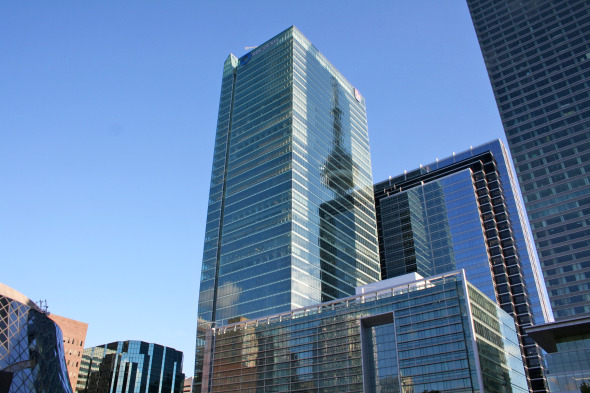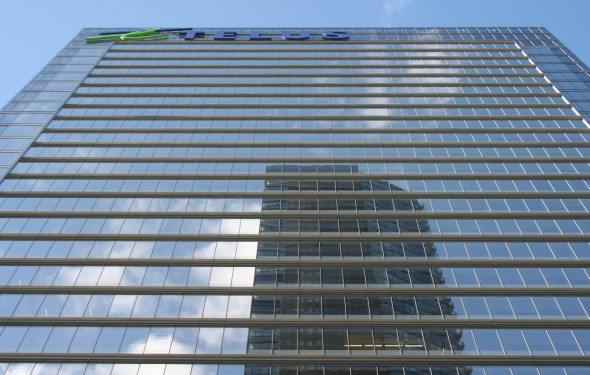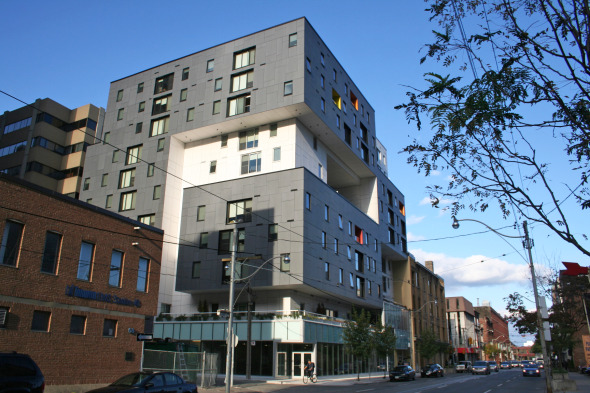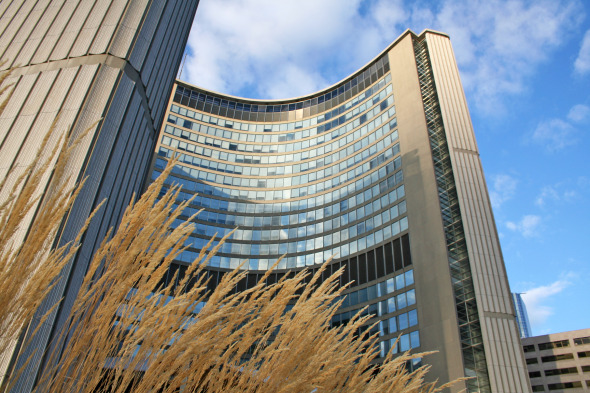
The LEED building boom in Toronto
Sustainable building practices are a hot topic in Toronto right now. When Christopher Hume brought together four of the city's most prominent architects for a roundtable discussion about architecture in Toronto, they disagreed on many things, bur the one thing they all agreed on was the increasing importance of the issue of sustainability: "there was unanimous consent that sustainability has become an issue no builder can ignore." And LEED (Leadership in Energy and Environmental Design) has become the accepted measure of sustainability in the building industry.
But what exactly is LEED? And is it the best way to measure sustainability?
Begun in 1998 by the U.S. Green Building Council (USGBC) - a non-profit organization dedicated to promoting sustainability in building practices - LEED aims to codify sustainability in a list of practical considerations. These criteria are captured under five categories: improved energy efficiency, water efficiency, site sustainability, materials selection and indoor environment quality. New criteria are reviewed and voted on by the 20,000 members of the USGBC. A similar, Canadian version of LEED is adapted for the Canadian market by the Canadian Green Building Council.

After a building is built or refurbished, it can apply for LEED certification. Upon an independent audit of the building, it can be awarded certification, silver, gold or platinum status due to the number of criteria it has achieved. Since its inception, thousands of projects across North America have achieved some form of LEED certification.

Toronto started late to the LEED game, but since then, many LEED-certified buildings have been built, and many more are planned. One of the most recent, Telus House, is aiming for LEED Gold Certification. It has an energy efficient heating and cooling system, recycles the water for its washrooms, and uses auto-dimming to reduce light consumption.
In fact, as the architects in the Hume piece suggested, LEED has become an almost de facto essential for marquee new office construction: along with Telus House, the RBC Centre and the Bay Adelaide Centre received or are working toward LEED Gold certification. First Canadian Place is also working toward LEED certification as part of its cladding replacement. And beyond commericial office construction, the number of buildings in the process of pursuing LEED certification is growing: RCMI Residences, 60 Richmond Street East housing co-op, Minto Midtown, M5V Condominium, 222 Jarvis Street, etc. Nearly 1,000 buildings are registered with the Canadian Green Building Council, and a third of them are located in Ontario.
And therein lies part of the problem with LEED, according to Daniel Brook, a journalist at Slate. In an article he wrote for the site, he pointed out some of LEED's weaknesses, including its use as a marketing tool rather than an ethos of sustainable building practices. He argues that since builders can opt for a limited number of criteria to achieve some LEED certification, they can aim for less costly additions (such as adding bike racks) and ignore more substantial and important additions (such as increasing the building's overall energy efficiency).

Some of the loopholes he pointed out in his article have been addressed by more recent updates to LEED's standards, but the inherent problem with checklists remains: a builder can follow the law of the checklist, but ignore the spirit of sustainable building practices - for instance, by including large parking structures in a LEED building. Moreover, by making energy efficiency standards optional, many buildings continue to be built that aren't energy efficient.

Toronto aims to get around this issue with its new Green Standard. As of January 31, 2010, all buildings in Toronto must meet Tier 1 of the Green Standard - this includes the provision that all new multi-unit residential buildings must include green roofs. As a further incentive, any project that meets both Tier 1 and Tier 2 of the Green Standard will have 20% taken off their development charges. Since the Green Standard is different than LEED, it is technically possible for a building to meet one checklist and not the other. However, since many of the practices are shared, a builder working toward sustainability under one system will likely try to meet it under the other.
But the increasing mass of certification and bureaucracy highlights the central problem of encouraging sustainability: with no standard guidelines of what constitutes sustainability, there is no way to enforce it that is loophole-proof. LEED and Toronto's Green Standard represent first steps toward a new way of thinking about building. But because of this, they have much that is controversial, even when the spirit is in the right place.
What do you think of LEED and Toronto's Green Standard? Do you think there are more effective ways to encourage sustainable building practices?
Latest Videos
Latest Videos
Join the conversation Load comments







